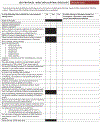Viral oncolytic immunotherapy in the war on cancer: Infection control considerations
- PMID: 30767816
- PMCID: PMC8859840
- DOI: 10.1017/ice.2018.358
Viral oncolytic immunotherapy in the war on cancer: Infection control considerations
Abstract
Oncolytic viral immunotherapy is an emerging treatment modality for cancer that exploits in vivo replication and other viral properties to enhance immune killing of malignant cells. The potential for horizontal transmission of native or engineered oncolytic viruses creates several unique infection control challenges. In 2015, talimogene laherparepvec (TVEC) became the first agent in this class to gain FDA approval for treatment of melanoma, and several others are being developed. Although some data on the transmissibility of TVEC are available from clinical studies, the aftermarket or real-world experience remains limited. We conducted a PUBMED-based search of the medical literature focusing on the safety and risk of TVEC transmission to close contacts including healthcare workers. The findings are summarized in this review and are intended to provide infection preventionists with practical guidance on handling issues related to administration and care of patients receiving TVEC. Additionally, we describe the current mechanism for evaluating the risk related to similar new agents entering clinical trials at our institution. Development of standarized approaches for the safe administration and precautions for ongoing care, especially in immunocompromised patients, are essential to support the broad adoption of this novel therapy.
Conflict of interest statement
Figures


References
Publication types
MeSH terms
Substances
Grants and funding
LinkOut - more resources
Full Text Sources
Other Literature Sources
Medical

